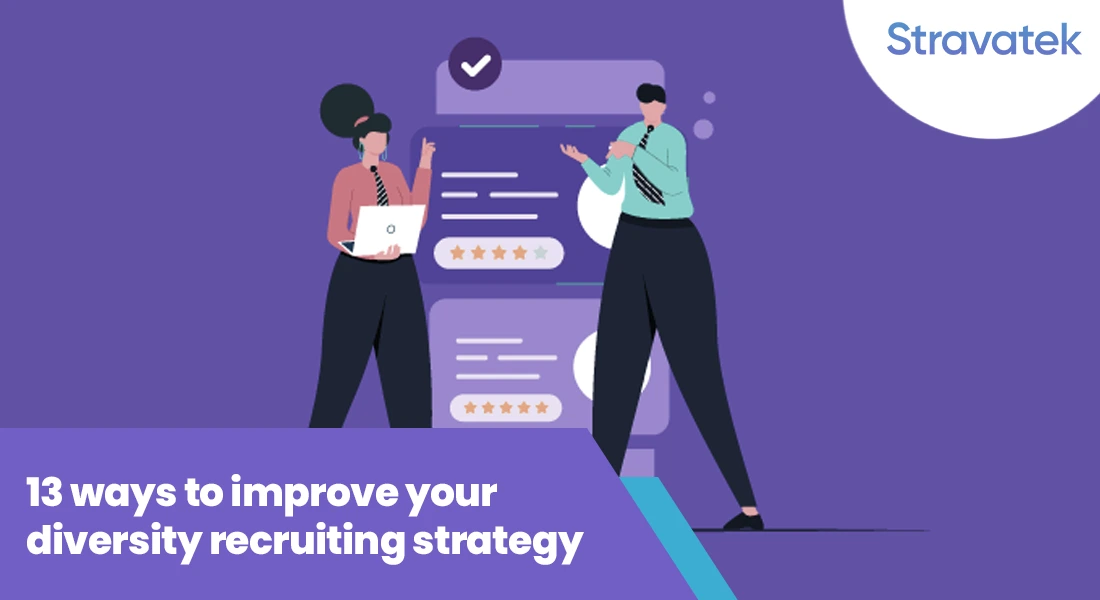13 Ways to Improve Your Diversity Recruiting Strategy

In today’s global marketplace, diversity is not just a buzzword but a crucial component of a successful business strategy. Embracing diversity in recruiting means welcoming candidates from various backgrounds, including genders, races, ages, religions, and abilities. In this article, we will explore 13 comprehensive ways to improve your diversity recruiting strategy, each offering a detailed approach to enhance the inclusivity and effectiveness of your recruitment process. Visit: HR Expert.
What is a Diversity Recruiting Strategy?
A diversity recruiting strategy is a comprehensive approach to attract, hire, and retain employees from various backgrounds. It involves proactive efforts to include individuals who bring multiple perspectives due to their different inherent and acquired characteristics. This strategy aims to create a workforce that mirrors the diversity of the broader society, enhancing creativity, decision-making, and representation in the workplace. Now that we have this covered let’s delve into the ways of implementing diversity in recruitment strategies.

1. Set Clear Diversity Goals and Metrics
Setting specific and measurable recruiting diversity goals helps track progress and assess the effectiveness of your recruiting efforts. For instance, if your goal is to increase the representation of women in technical roles, you should establish a baseline of current figures and set a target for improvement. These metrics will guide your recruitment activities and help evaluate their success.
2. Utilize Data Analytics for Strategic Insights
Incorporate data analytics into your diversity recruiting strategy to gain deeper insights into your hiring process. Analyze recruitment data to identify patterns and trends, such as the diversity of your applicant pool and the effectiveness of different sourcing channels. Use this information to refine your strategy and make data-driven decisions that enhance diversity.
3. Audit and Revise Job Advertisements
Job advertisements often contain language that unconsciously appeals to certain demographics. By auditing and revising these ads, you can ensure they are inclusive and appealing to a broad audience. This might involve using gender-neutral language or avoiding terms that might resonate more with certain age groups or cultural backgrounds.
4. Diversify Candidate Sourcing
One of the prevailing diversity hiring strategies includes diversifying your sourcing channels to reach a diverse candidate pool. This includes exploring niche job boards, participating in career fairs, and connecting with organizations supporting underrepresented groups. By varying your sourcing methods, you increase the likelihood of attracting a wide array of candidates.
5. Leverage Employee Referral Programs
Employee referral programs can be a powerful tool for enhancing diversity. Encourage your employees, especially those from diverse backgrounds, to refer potential candidates. This can be facilitated through incentives and by making the referral process simple and accessible.
6. Offer Targeted Internships and Co-op Programs
Internships and co-op programs targeted towards underrepresented groups can help build a diverse talent pipeline. Reach out to educational institutions and community organizations that work with these groups to establish partnerships. These programs provide valuable work experience to students and early career professionals while helping your organization identify future talent.
7. Build an Inclusive Employer Brand
Your employer brand should reflect your commitment to diversity and inclusion. This involves showcasing stories and testimonials from diverse employees, highlighting your inclusive culture in marketing materials, and actively promoting different types of diversity in internal and external communications.
8. Implement Inclusive Policies and Benefits
Review your company policies and benefits to ensure they cater to a diverse workforce. This could mean offering flexible working hours, recognizing non-traditional family structures in your benefits packages, or making your workplace accessible for people with disabilities. Inclusive policies make your organization more attractive to a diverse range of candidates.
9. Train Your Team to Avoid Unconscious Bias
Unconscious bias training helps recruitment teams and hiring managers recognize and mitigate their own biases. This training can cover various aspects of the recruitment process, from resume screening to interviewing, ensuring that candidates are evaluated based on their skills and experience.
10. Utilize Blind Recruitment Techniques
Blind recruitment involves removing personally identifiable information from resumes and applications, such as names, gender, age, and educational background. This technique helps to focus on a candidate’s skills and competencies, reducing unconscious bias in the screening process.
11. Standardize Interview Processes
A standardized interview process ensures that all candidates are assessed equitably. This includes using consistent questions and evaluation criteria for all interviewees. Such standardization helps minimize personal biases and allows for a fair comparison of candidates’ skills and qualifications.
12. Enhance Onboarding and Support Systems for Diversity Hire
Once diverse candidates are hired, it’s crucial to ensure they feel welcomed and supported. A comprehensive onboarding process tailored to the needs of diverse employees can help them integrate smoothly into your organization. Additionally, establishing support systems such as mentorship programs, affinity groups, and regular check-ins can foster a sense of belonging and assist in their professional development.
13. Conduct Regular Diversity Assessments and Feedback Loops
Regularly assessing your organization’s diversity recruiting efforts helps identify areas for improvement and celebrate successes. Implement feedback loops involving diverse employees and candidates who have undergone your recruitment process. Their insights can provide valuable information on how to make the process more inclusive and effective. Regular assessments and feedback can improve your diversity recruiting strategies continuously.
Conclusion
Improving your diversity recruiting strategy is a continuous process that involves understanding the value of diversity, setting clear goals, and implementing practical measures to attract a diverse pool of candidates. By focusing on these 13 areas, your organization can make significant strides in building a more inclusive and diverse workforce, ultimately leading to a more dynamic, innovative, and successful business. Visit: HR Services.
If you’re seeking top-tier talent to drive your organization’s success and wish to enhance your diversity recruiting strategies, Stravatek is here to assist. Our comprehensive HR outsourcing and headhunting services specialize in connecting businesses with exceptional professionals tailored to meet the diverse needs of today’s competitive landscape. We understand the nuances of diversity recruiting and are committed to helping you achieve a workforce that reflects the diversity and dynamism of the global market. Explore our HR Services or contact us to learn how our expertise can benefit your organization.
© 2021 Stravatek. All rights reserved.


